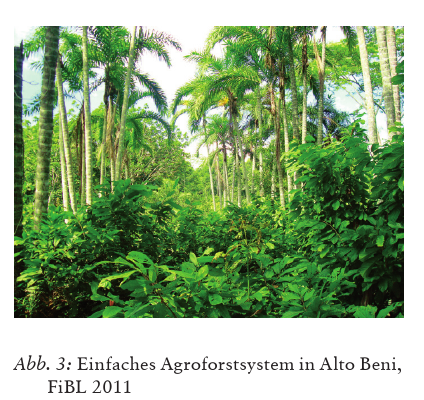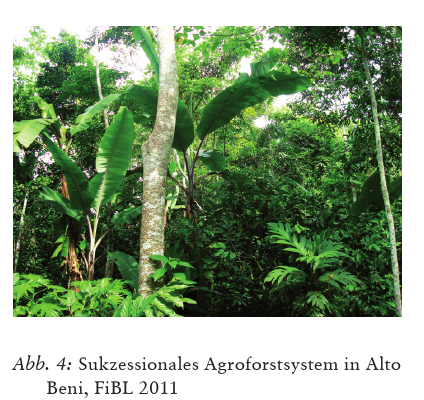Agroforstwirtschaft als ökologisch, ökonomisch und sozial nachhaltige Landnutzungsform: Fallbeispiel Kakaoanbau in Bolivien
Artikelreferenz exportieren
- Klartext
- BibTeX
- RIS Format
- Downloadkosten : € 6.00
Zusammenfassung:
Die Agroforstwirtschaft kann zum Schutz des Bodens, der Biodiversität, zur Ernährungs- und Einkommenssicherheit sowie zur Resilienz gegenüber dem Klimawandel beitragen. Kakaobauern in Alto Beni in Bolivien setzen verschiedene Anbausysteme für den Kakaoanbau ein, von Monokulturen bis zu hoch diversifizierten Agroforstsystemen, und viele haben die Bio-Zertifizierung. Um die verschiedenen Anbausysteme zu vergleichen und herauszufinden, was die Rolle der Bio-Zertifizierung ist, wurden für diese Studie Daten in Kakaoparzellen erhoben und Interviews mit Kakaoproduzenten durchgeführt. Neben der Biodiversität waren auch die Kakaoernten und die Einkommen der Familien höher, welche ein Agroforstsystem hatten. Die Interviews zeigten, dass die Bio-Zertifizierung die Kakaoproduzenten motivierte, Kooperativen zu gründen, die Wissen und technische Unterstützung zugänglich machten, was wiederum die Agroforstwirtschaft förderte. Die Kooperativen boten Rückhalt und soziale Netze, Austausch und Wissensvermittlung und sollten daher für eine nachhaltige Entwicklung systematisch und langfristig unterstützt werden.






